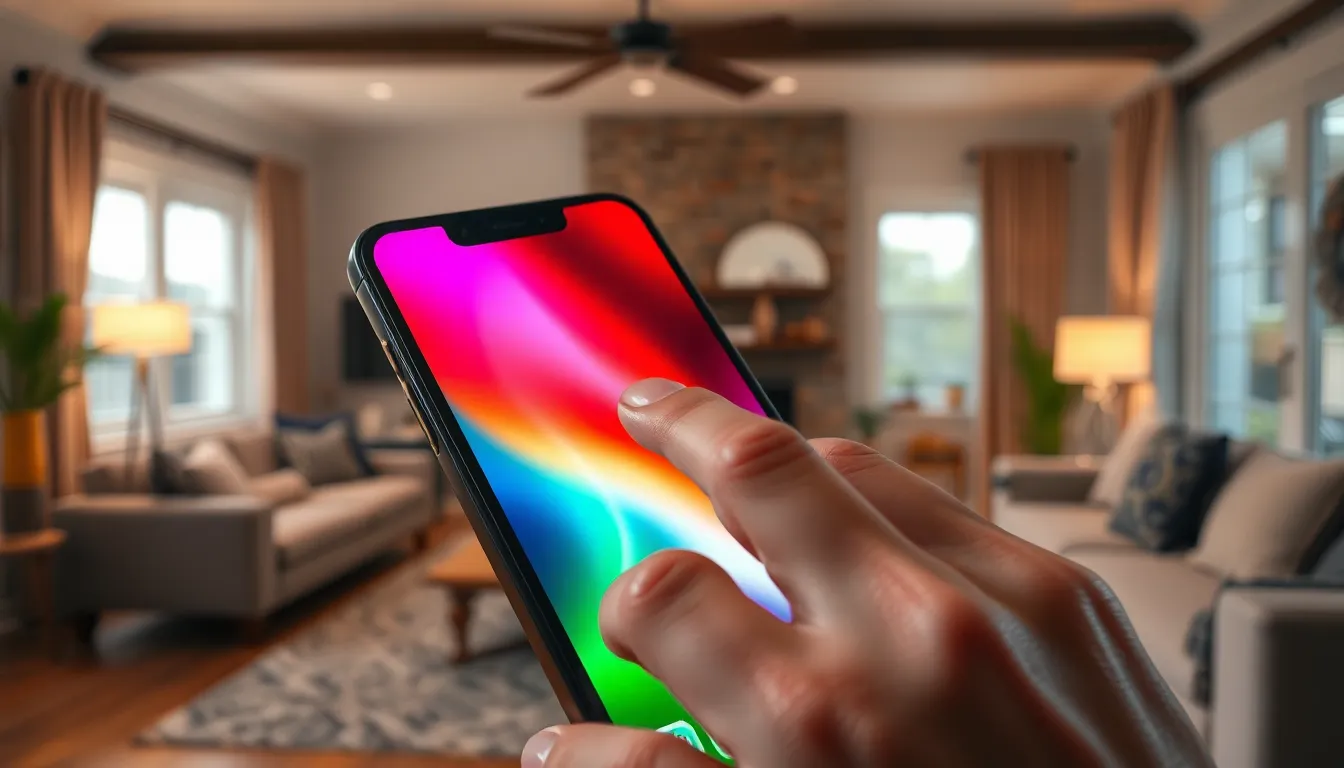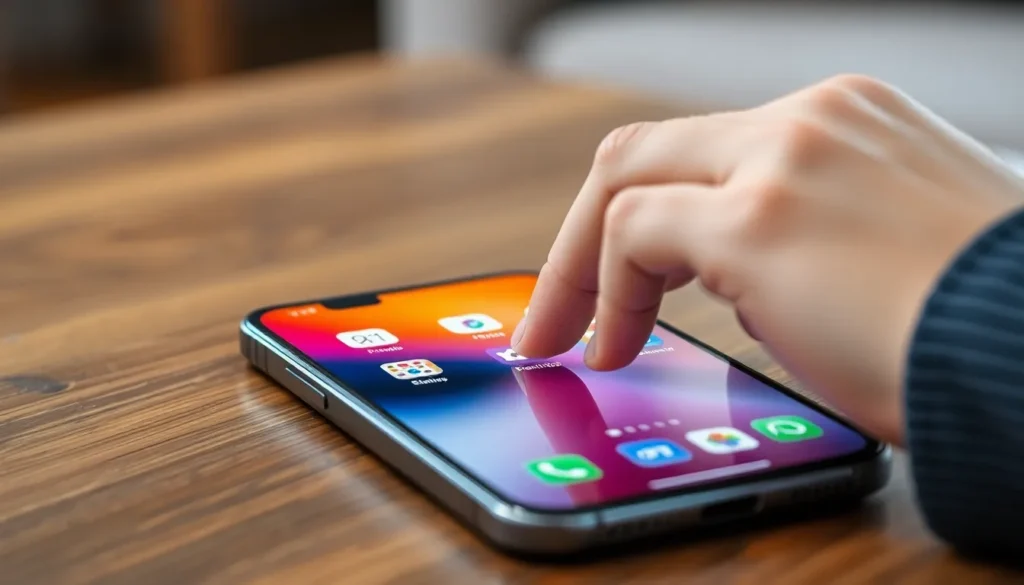Is your iPhone looking like it just stepped out of a 1950s film noir? If the world around you has turned into a monochrome masterpiece, it’s time to add a splash of color back into your digital life. Whether you accidentally activated the grayscale mode or just want to brighten things up, changing your iPhone from black and white is easier than finding a charger in a messy drawer.
Table of Contents
ToggleUnderstanding Black and White Mode
Black and White Mode, often referred to as Grayscale, alters the iPhone’s color display, presenting everything in shades of gray. Users may find this unexpected change disorienting, as it strips away the vibrant colors typically present in applications and images.
What Is Black and White Mode?
Black and White Mode is a display setting on the iPhone that replaces all colors with a monochrome palette. This feature assists users who may experience visual stress from bright colors or who require a simpler visual interface. For accessibility, it reduces distractions and promotes focus on essential tasks. Activation occurs through accessibility options, creating an efficient experience for those needing it.
Reasons for Black and White Mode Activation
Several factors can lead to the activation of Black and White Mode. Users might accidentally enable it while navigating settings. Another possibility includes a specific accessibility feature being turned on for convenience, often without the user realizing it. Some individuals with visual impairments switch to grayscale mode for ease of use. Memory-saving benefits also exist, as reduced color rendering can improve performance on older devices.
Preparing Your iPhone

Before making changes to the display settings, confirm your iPhone is ready for adjustments. This section outlines essential checks and settings.
Checking Your iOS Version
First, identify the current iOS version running on the device. To do this, navigate to the Settings app, then scroll down and tap on General. From there, select About. The software version appears at the top of the screen. An iPhone running iOS 10 or later provides a straightforward method to switch back to color. Keeping the device updated ensures compatibility with the latest features and settings.
Ensuring Accessibility Settings
Next, review accessibility settings to check for any adjustments that may have enabled Grayscale mode. Open the Settings app and tap on Accessibility. Inside this menu, look for Display & Text Size. Once there, check if Color Filters are activated. If the Color Filters option is enabled, the iOS device displays in black and white. Toggle the switch off to restore vibrant colors to the display.
Changing Your iPhone from Black and White
Restoring color to an iPhone that’s in grayscale mode involves a few straightforward steps. Users can quickly navigate through the settings to bring back the vibrant display.
Using Accessibility Settings
Start by opening the Settings app on the iPhone. Next, find Accessibility in the list. Inside, scroll down to find Display & Text Size. If Color Filters are enabled, toggle them off to restore the colorful interface. Color Filters can alter the display settings and cause grayscale. Users might also check for any other settings that could impact the appearance of their display. Once adjustments are made, colors should reappear instantly.
Disabling Grayscale Mode
To disable Grayscale Mode, users can follow a simple procedure. Open the Settings app and tap Accessibility. Then, select Display & Text Size and confirm Color Filters is off. If the device still displays in black and white, check the Accessibility Shortcut settings for any assigned options that might affect color settings. Users may need to triple-click the side button if an accessibility feature is active. Disabling the relevant options will restore the iPhone’s vibrant color display and enhance the overall user experience.
Additional Tips and Tricks
Restoring color to an iPhone can be enhanced with a few additional strategies. Exploring the available color filters and adjusting display settings can lead to a better user experience.
Exploring Color Filters
Color filters offer various ways to customize the display. Users can navigate to Settings, then Accessibility, and select Display & Text Size. After reaching this menu, several filter options will appear. Different filters can adjust colors for those with visual impairments or enhance color perception. Toggling these filters off or selecting none is often necessary for those wanting to return to a full-color display. Occasionally, experimenting with these settings provides a personalized touch to how information appears on the screen.
Using Display Settings for Better Experience
Display settings play a crucial role in the viewing experience. Accessing Settings, followed by Display & Brightness, reveals brightness adjustments and options. Brightness levels should be set appropriately for optimal visibility. Activating Night Shift might also be beneficial for those who use their devices in low-light environments, as it reduces blue light. Regularly reviewing these settings assists in optimizing overall use while ensuring comfort during extended viewing sessions. Ultimately, maximizing display settings enhances interaction with apps and content, making the iPhone experience more enjoyable.
Restoring color to an iPhone that’s stuck in grayscale is a straightforward process that can significantly enhance the user experience. By following the outlined steps in the article users can easily navigate through the settings to bring back the vibrant colors they enjoy. This not only improves visibility but also makes interacting with apps and media more enjoyable.
Regularly checking display and accessibility settings ensures that the iPhone remains in optimal condition. Exploring the various display options can also help users customize their devices to suit their preferences. With just a few adjustments users can transform their monochrome screens back to the colorful interfaces they love.








